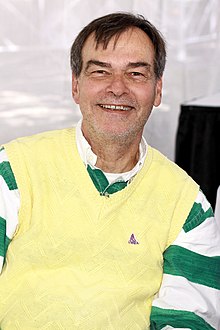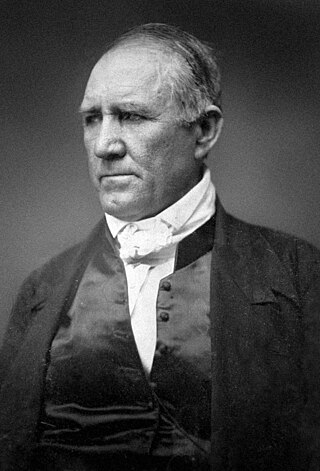
Samuel Houston was an American general and statesman who played an important role in the Texas Revolution. He served as the first and third president of the Republic of Texas and was one of the first two individuals to represent Texas in the United States Senate. He also served as the sixth governor of Tennessee and the seventh governor of Texas, the only individual to be elected governor of two different states in the United States.

James Albert Michener was an American writer. He wrote more than 40 books, most of which were long, fictional family sagas covering the lives of many generations, set in particular geographic locales and incorporating detailed history. Many of his works were bestsellers and were chosen by the Book of the Month Club; he was known for the meticulous research that went into his books.

Cynthia Ann Parker, Naduah, Narua, or Preloch, was a woman who was captured by a Comanche band during the Fort Parker massacre in 1836, where several of her relatives were killed. She was taken with her younger brother, John Richard Parker, and cousin, James Pratt Plummer. Parker was later adopted into the tribe and had three children with a chief. Twenty-four years later she was relocated and taken captive by Texas Rangers, at approximately age 33, and unwillingly forced to separate from her sons and conform to European-American society. Her Comanche name means "was found" or "someone found" in English.
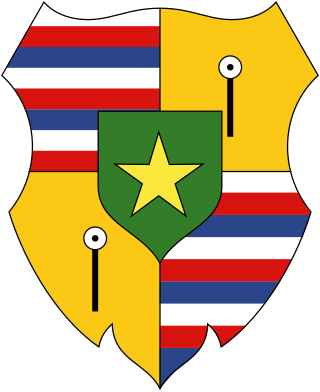
The House of Kalākaua, or Kalākaua Dynasty, also known as the Keawe-a-Heulu line, was the reigning family of the Kingdom of Hawaiʻi between the assumption of King David Kalākaua to the throne in 1874 and the overthrow of Queen Liliʻuokalani in 1893. Liliʻuokalani died in 1917, leaving only cousins as heirs. The House of Kalākaua was descended from chiefs on the islands of Hawaiʻi and Kauaʻi, and ascended to the royal throne by election when the males of the House of Kamehameha died out. The torch that burns at midday symbolizes the dynasty, based on the sacred kapu Kalākaua's ancestor High Chief Iwikauikaua.
The 1864 Constitution of the Hawaiian Kingdom abrogated the 1852 constitution issued by King Kamehameha III. It dramatically changed the way Hawaii's government worked by increasing the power of the king and changing the way the kingdom's legislature worked. It was Hawaii's constitution from 1864 through 1887, during the reigns of kings Kamehameha V, Lunalilo, and Kalākaua. It was replaced by the 1887 constitution.

Margaret Lea Houston was First Lady of the Republic of Texas during her husband Sam Houston's second term as President of the Republic of Texas. They met following the first of his two non-consecutive terms as the Republic's president, and married when he was a representative in the Congress of the Republic of Texas. She was his third wife, remaining with him until his death.
The American Civil War bibliography comprises books that deal in large part with the American Civil War. There are over 60,000 books on the war, with more appearing each month. Authors James Lincoln Collier and Christopher Collier stated in 2012, "No event in American history has been so thoroughly studied, not merely by historians, but by tens of thousands of other Americans who have made the war their hobby. Perhaps a hundred thousand books have been published about the Civil War."
Robert J. Conley was a Cherokee author. In 2007, he received the Lifetime Achievement Award from the Native Writers' Circle of the Americas.
The Battle of Plum Creek was a clash between allied Tonkawa, militia, and Rangers of the Republic of Texas and a huge Comanche war party under Chief Buffalo Hump, which took place near Lockhart, Texas, on August 12, 1840, following the Great Raid of 1840 as the Comanche war party returned to west Texas.
The birth of the first white child is a concept that marks the establishment of a European colony in the New World, especially in the historiography of the United States.

Mataio Kekūanaōʻa, formally referred to as His Honor or His Highness, was a Hawaiian politician who served as governor of the island of Oʻahu, father of two kings, Kamehameha IV and Kamehameha V, and held the office of Kuhina Nui as did his wife, Kīnaʻu and their daughter, Victoria Kamāmalu.
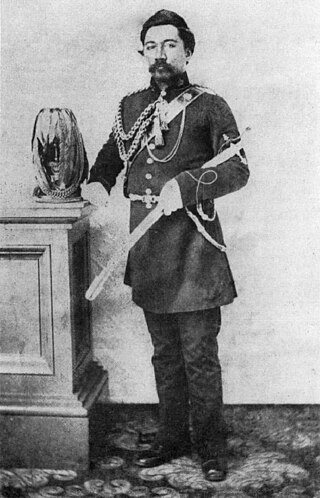
Peter Young Kaʻeo Kekuaokalani was a Hawaiian high chief (aliʻi) and politician of the Kingdom of Hawaii. His cousin was Emma, who contended for the throne after the death of Kamehameha. After being diagnosed with leprosy, he was exiled in 1873 to Kalaupapa, the isolation settlement on Molokaʻ. He was later permitted to return to Honolulu, where he died.
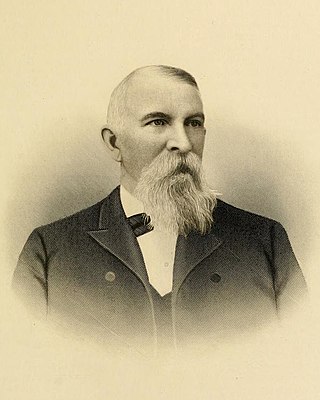
Nelson Story Sr. was a pioneer Montana entrepreneur, cattle rancher, miner and vigilante, who was a notable resident of Bozeman, Montana. He was best known for his 1866 cattle drive from Texas with approximately 1000 head of Texas Longhorns to Montana along the Bozeman Trail—the first major cattle drive from Texas into Montana. His business ventures in Bozeman were so successful that he became the town's first millionaire. In 1893, he played a prominent role in the establishment of the Agricultural College of the State of Montana by donating land and facilities. He built the first Story Mansion on Main Street in Bozeman in 1880 and later built today's Story Mansion at the corner of Willson and College for his son, T. Byron Story in 1910. In his later years, he became a prominent real estate developer in Los Angeles, California.

John Milton Oskison (1874–1947) was a Native American writer, editor and journalist. His fiction focused on the culture clash that mixed-bloods like himself faced.

Timothy Henry Hoʻolulu Pitman was an American Union Army soldier of Native Hawaiian descent. Considered one of the "Hawaiʻi Sons of the Civil War", he was among a group of more than one hundred documented Native Hawaiian and Hawaii-born combatants who fought in the American Civil War while the Kingdom of Hawaiʻi was still an independent nation.
Mary Lambert Jones Dominis was an American settler of Hawaii and the first mistress of Washington Place in Honolulu. Born into a large New England family, she married merchant sea Captain John Dominis, for whom Honolulu was a frequent port of trade. The couple relocated in 1837 to the Hawaiian Kingdom with their son John Owen Dominis. Their two daughters remained behind to complete their education.

Ursula Sophia Newell Emerson was an American missionary in the Hawaiian Islands who co-founded the Waialua Protestant Church, later renamed the Liliʻuokalani Protestant Church, with her husband John Smith Emerson.

Laura Fish Judd was an American missionary, teacher and historian noted for her works on the Kingdom of Hawaii.

Sam Houston had a diverse relationship with Native Americans, particularly the Cherokee from Tennessee. He was an adopted son, and he was a negotiator, strategist, and creator of fair public policy for Native Americans as a legislator, governor and president of the Republic of Texas. He left his widowed mother's home around 1808 and was taken in by John Jolly, a leader of the Cherokee. Houston lived in Jolly's village for three years. He adopted Cherokee customs and traditions, which stressed the importance of being honest and fair, and he learned to speak the Cherokee language. He felt that Cherokees and other indigenous people had been short-changed during negotiation of treaties with United States government, the realization influenced his decisions as a military officer, treaty negotiator, and in his roles as governor of the states of Tennessee and Texas, and president of the Republic of Texas.
Sam Houston Jr. (1843–1894) was the oldest of eight children born to Sam Houston and Margaret Lea Houston, and was the only Houston child born in the Republic of Texas, before its December 29, 1845 annexation to the United States. He was home-schooled by his mother, and later attended both Bastrop Military Institute and Baylor University. After Texas seceded from the Union in 1861, he enlisted in the Confederate States Army 2nd Texas Infantry Regiment, Company C Bayland Guards. Wounded at the April 1862 Battle of Shiloh, he served time as a prisoner of war at Camp Douglas in Illinois. Following his release, he received a medical discharge from the Confederate States Army. He attended the Philadelphia University of Medicine and Surgery. Upon graduation, he returned to a private life, and it is unknown if he ever practiced medicine. At some point, he became a writer. Houston married Lucy Anderson in 1875. Their daughter Margaret Bell Houston (1877–1966) was also a writer, as well as a suffragist who became the first president of the Dallas Equal Suffrage Association. Upon his death, Sam Jr. was buried on private property near his mother.
